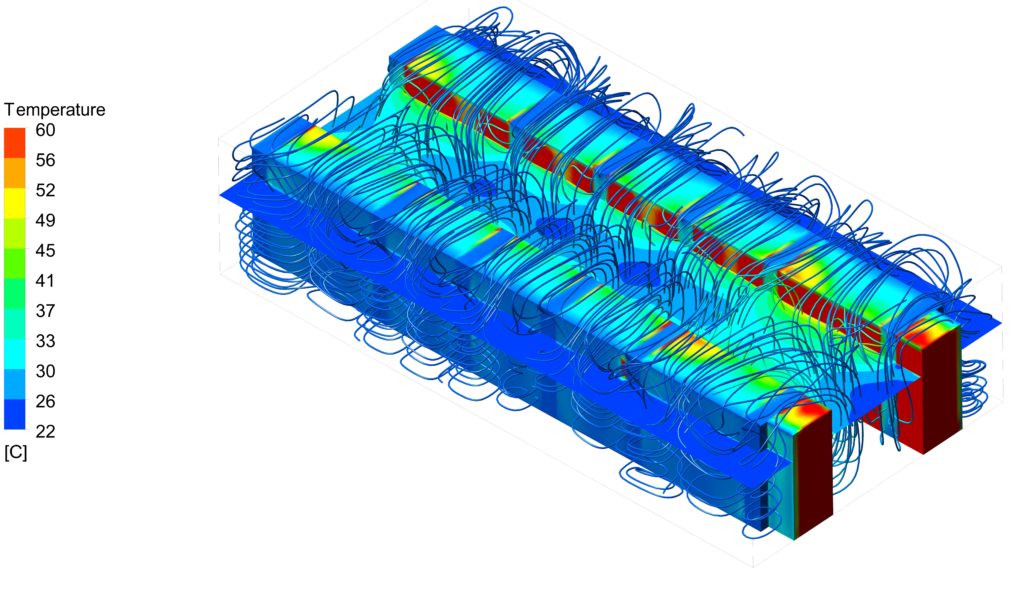CFD for cooling of a data center
Data centers are substantial energy consumers because they perform intensive numerical computations 24/7 and need to be cooled continuously. Proper design and layout of the data center equipment (racks) may significantly contribute to its energy performance and prevent racks overheat and failure. Frequent upgrades and relocation of racks leave data center managers with an open question whether the existing cooling system (both capacity and velocity distribution) may perform well within the new/modified layout.
Simple analytical expressions and correlations from heat transfer textbooks do provide a quick insight into the heat load on a per rack basis. However, this approach is not appropriate when it comes to the complex data center layouts and where the global picture of the flow and temperature distribution within the data center is needed. Flow calculations allow to verify if the cooling capacity is well distributed over the room. It is also used to check different scenarios as what happens when a cooling unit fails or when the equipment is distributed differently over the room.

Computational fluid dynamic (CFD) is frequently used in :
- Defining which cooling approach is the most suitable for a specific data center size and its initial layout
- Optimizing air and temperature distribution in data centers which yields operational cost savings
- Quick reassessment of the existing cooling infrastructure setup within the modified equipment layout
